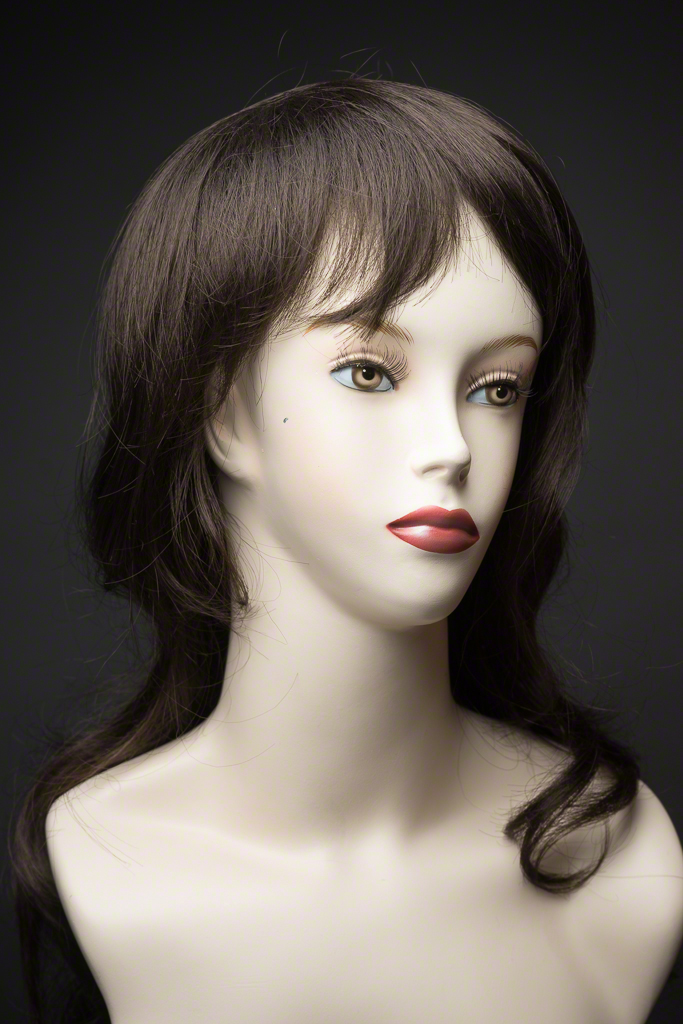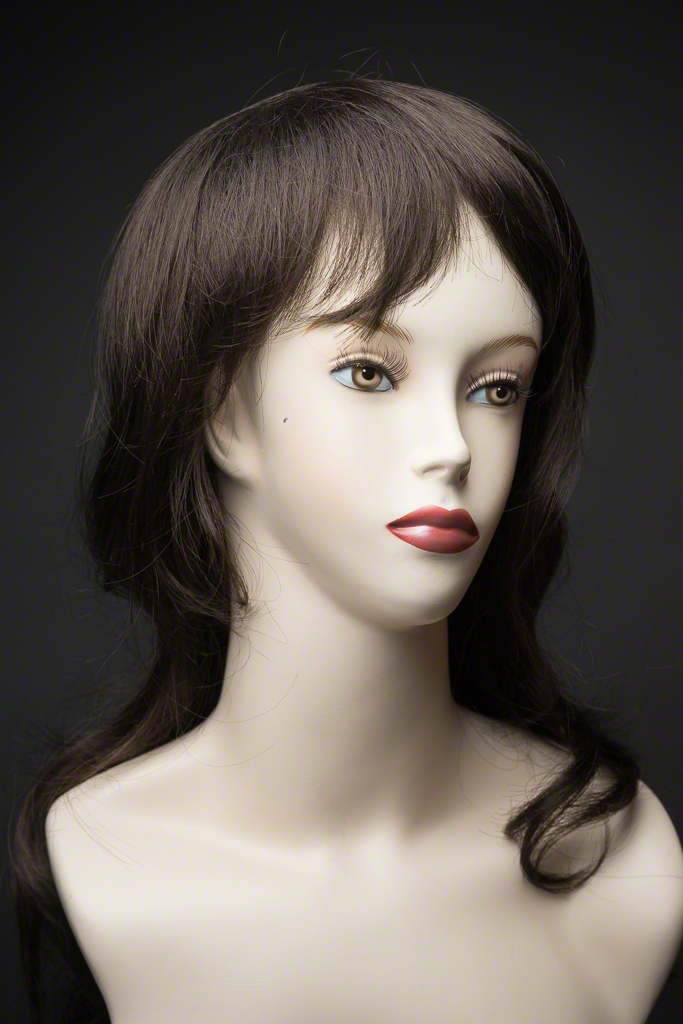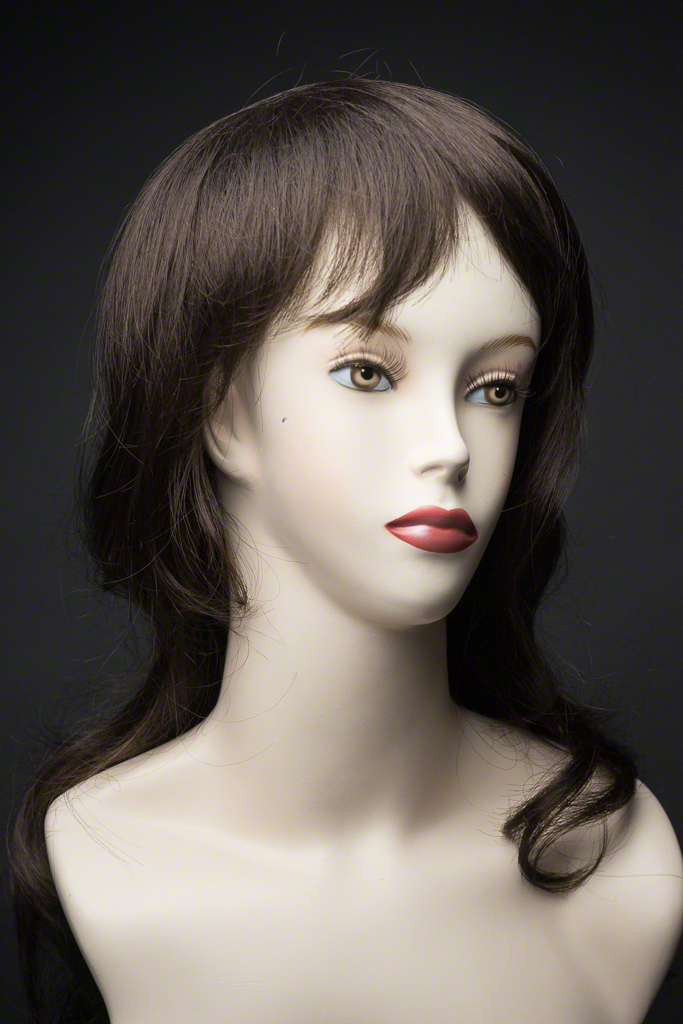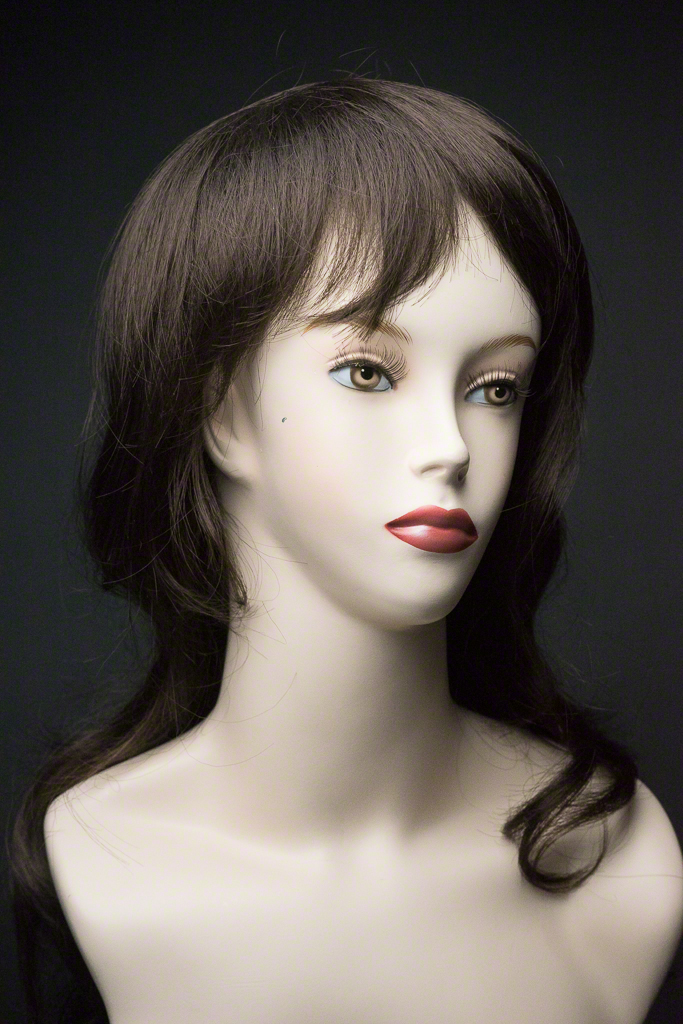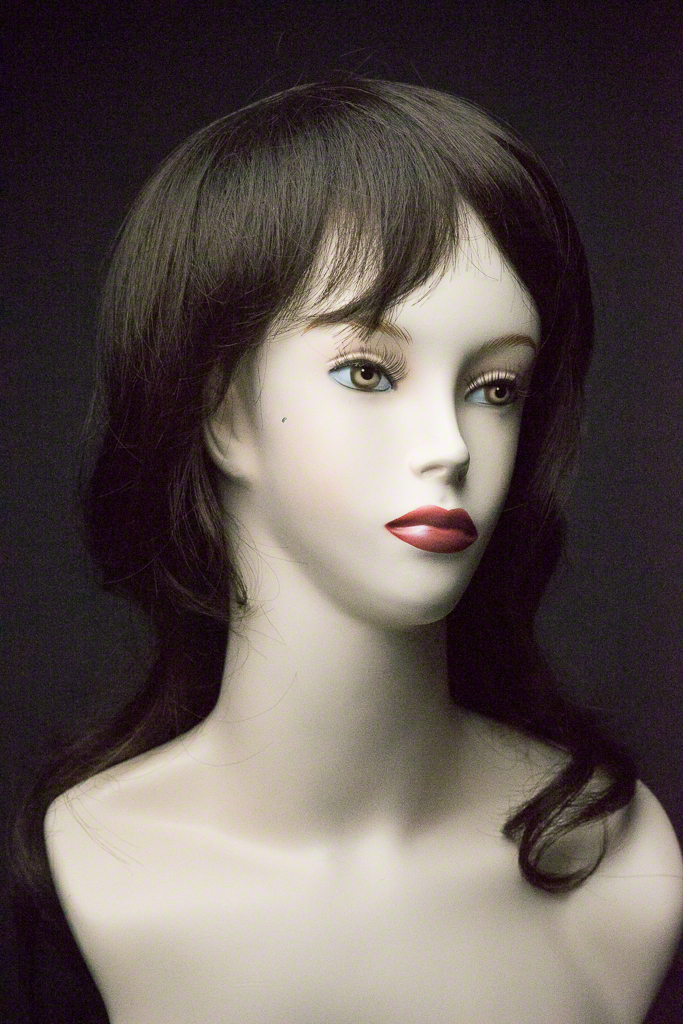REVIEW : Sony A7
/A number of readers have asked for my thoughts on Sony's compact A7 camera. So with the support of Chris Atkinson at Henry's Newmarket, I obtained an evaluation unit to put through the paces. The start was inauspicious however, because Sony is one of those companies that is SO STUPID that the only way to charge the battery is to have it in the camera and plugged into the wall. Minuscule charge indicator, no ability to charge a battery while using the camera, no ability to use the camera while charging the battery, and a charge time of only 310 minutes which doesn't look nearly as crappy as 5 HOURS. Whichever would be rocket surgeon (that's a W reference btw) thought this was a smart idea in a prosumer product needs to be packed into a missile and fired directly into the Sun. Idiots. Fortunately, things get better...The Basics The A7 is an interchangeable lens camera offering a 24.3 megapixel full frame sensor driven by Sony's BIONZ X series processor. The camera uses Sony E Mount lenses. What makes the A7 and its sibling the A7r special is the size. It's small. In fact it reminds me of the wonderful Olympus OM-D E-M1 in form factor. Except instead of being M4/3 it's full frame!
The viewfinder is electronic as one would expect in a mirror less system camera. It uses an OLED display with 2.4M dots so it is very bright and very easy to read.
There's a lot to like about the A7 as you'll see but there are a couple of items that annoyed me right out of the box, in addition to the moronic attitude towards battery charging. The strap lugs are the triangle type. The lugs are positioned ideally to ALWAYS be in the way of your right hand fingers. I'm becoming certain that no one actually tries these things out with a strap mounted during the design process. The placement is lousy.
The other thing that really puts me off is the fake shutter noise. The A7 is a mirror less camera. It could be dead silent. But the default is a ka-chunk you can hear while a freight train steams beside you. The A7 is elegantly beautiful and unobtrusive, until you press the shutter button and then it has all the grace of a hippo with gas, passing wind in a bathtub.
Moving on to the good stuff, and there is a lot of good stuff...
The A7 offers a 24MP sensor but if you want more there is the A7r which has a 36MP full frame sensor and no anti-aliasing filter. Haven't personally seen one, but they do exist. For the purposes of this review, it's all done with a regular A7.
The camera came with the new FE series 28-70. For a full frame zoom, this is kind of a short range and it's not a speed demon being f/3.5-f/5.6. Construction is really solid though, and there are faster FE lenses available in primes and fast zooms, some with Zeiss optics. Note that I keep referring to FE series. These are the Full Frame E Series lenses. The NEX E series are designed for APS-C sized sensors, so while you can mount them up, they do not produce a full frame image circle without some vignetting or falloff. A limited selection of available FE lenses is going to slow adoption of the A7 and A7r. You can of course still use the other E mount lenses and the camera offers an automatic conversion to crop sensor similar to Nikon.
The rear LCD is quite nice and has the angle capability seen on other Sony cameras so you can tilt it up or down, but not to the side. There's usability in this when shooting video. Indoors it is bright and easy to see but while outside on a sunny day doing test shots, it was nearly unreadable. I also find that it sucks up nose grease very quickly and is hard to get clean. You'll want to have a micro fibre cloth in your bag with you.
The control layout is quite good. There is a master dial for mode selection, and a secondary dial that gives direct access to exposure compensation. This is one of my favourite features as it makes adjustment very quick and because you see simulated exposure in the EVF, you get a very good sense of what the compensation is going to do for you. There is a dial towards the front to control aperture and one towards the rear to control shutter speed. You can reverse them in the menus if you prefer. There is no top deck ISO control, and while the AUTO ISO functionality works well, I would rather not have to dive into a menu or navigate the popup from the Fn button on the back just to manipulate the ISO.
Some readers will recall my effusive love of the original RX-100 and how good I thought that Sony's Superior-Auto mode was for most any exposure situation. The brand new shooter is going to love the AUTO mode because it's the same powerful Superior-Auto as in the RX-100.
And of course the camera has numerous Scene modes and Sweep Panorama that serious photographers aggressively ignore.
The kit lens is what you would expect, sharp enough with reasonable distortion and vignetting control. When importing RAW files (Sony's own ARW) to Lightroom, there is a Lens Correction profile present that fixes the distortions and vignetting available. The changes you see are significant. I do wish that for the lens' not insignificant size that it was either optically faster or had a more useful zoom range. I found the construction felt good but the zoom was very stiff. In fairness the day started out at -20 Celsius and only warmed up to -10 Celsius before I left to come home. I would very much like to shoot this camera with one of the Zeiss optics that are coming for the A7 series. A camera this size with a fast 35mm and fast 85mm could be very usable.
I was griping earlier about the length of time to charge the battery and that it has to be in the camera to be charged. You can buy a separate external charger and extra batteries. These are a must. After shooting only 115 exposures, I was down to 65% battery according to the display. This suggests that you will top out just under 400 exposures, so if you are serious about your photography, or doing a lot of bracketing, or simply like being out for a long day of making images, you are going to need more batteries. I did not obtain the external charger as part of this evaluation, so cannot advise on whether the recharge time is faster than the USB method.
Shutter Speeds
The camera can offer shutter speeds from 1/8000 down to 30 seconds plus bulb mode. Like Sony NEX cameras, you can buy additional applications and download them to the camera including functions like an intervalometer. I think that this is nickel and diming the customer given the relatively high price of the camera, but this is of course just my opinion.
Menus
The menu system is quite intuitive and a menu page rarely has more options than the height of the screen. Options are where you might expect them to be and I would assess the learning curve to becoming very comfortable to be quite shallow. I would rate the Sony menu system as better than most.
Flash
The A7 has no built-in flash and does include Sony's proprietary multi-pin connector at the front of the shoe. This allows for more than just flash units to be installed there. Other items include a shoe mount microphone system. Sony does offer combo flash / video light units and they are available with full TTL, remote capability, bounce heads and decent guide numbers. I did not obtain a flash to evaluate. At some point in the future I will do so to see how the Sony system compares to other line of sight infrared remote flash management systems.
Continuous Shooting and Bracketing
Burst mode is up to 5fps and like other digitals, is leveraged for bracketed shooting. Up to 5 frame brackets are available at intervals of up to 0.7 EV, and the limit drops to 3 frames at 1 and 2 EV. Of course you can manually bracket as much as you want but I found the +-2EV 3 image bracket to be very convenient during my outdoor test shoot as it was bright sun on white snow with some trees and other foreground objects.
Image and Clip Storage
Images are stored on SD sized cards, although being Sony, there is still an option to use the long demised and completed unmissed Memory Stick options. For my tests, I was using a Sandisk Extreme Pro card and had no issues at all. The card inserts into a front facing slot by opening a door on the right side. This makes it very easy to change cards if the camera is on a tripod or used with the optional vertical grip. (It's really a battery grip of course but marketing loves to name things differently).
All major processing software has already been updated to read Sony's ARW RAW format, so opening the files was no trouble at all. I did discover to my chagrin that the camera came complete with pets, several cat sized dust spots on the sensor. I was able to correct these in post processing, but it serves to remind owners that there is nothing in front of the sensor when the lens is not mounted. I was able to use a blower and an ArcticBrush to clean the sensor quickly.
There are programmable buttons on the camera but to my pleasure you don't trip over hundreds of them. This keeps things simple and easy to use. I shot all morning outside while wearing gloves and at no time did I need to remove them to alter a setting. So even though I personally find the buttons very small, they are very usable.
ISO Performance
In order to make test shots at different ISOs I mounted the camera to a Manfrotto ball head on a Manfrotto magic arm on my studio stand. I was pleased to see that unlike some competitors, the tripod socket is all metal and very sturdy. While there are not many lenses yet in the FE mount, if Sony really wants this line to launch, they are going to need more glass, and longer glass in short order.
Thinking of ISO, I shot the camera outdoors for a bit in AUTO ISO shooting in all of Program, Aperture Preferred, Shutter Preferred and Manual modes. The software is well programmed to seek the lowest viable ISO but not at the expense of diminished stability. When I came back inside, I set the camera on the studio stand to photograph my ever patient model Sondra at a variety of ISOs and was very pleased to see that the A7 holds together very well to ISO 6400, is quite good at ISO 12800 and only really falls apart at ISO 25600. It's not a Nikon Df or Canon 1Dx from a low light capability but is a very solid performer. I've put a gallery of the same shot up from ISO 50 to ISO 25600 so you can see for yourself.
Connectivity
Sony makes software available to download your photos direct from the camera, and to convert the RAW format if you don't have a more sophisticated editing application.
They offer a tethering application, although they call it Remote Control that works over USB. The cable that comes with the camera is VERY short, so you'll need to purchase a USB extension if you want to use the factory supplied cable. Since the camera side connector is a Micro USB, you may had some difficulty finding long cables of this type.
There is a micro HDMI out, and if you wish to use it, you'll need to go source your own cable. I did not have one and so did not test streaming through the HDMI port.
There is as one would hope a ⅛" mini jack for an external microphone but there is also a headphone jack, a feature sorely missing on most cameras and critical for audio monitoring when shooting video.
The camera has GPS capability as well as built in wireless. I could get the wireless to connect to my private wireless network easily and also used it's self-generating network to push images to the Play Memories app on the iPhone.
Although I downloaded and appeared to be able to configure wireless image transfer to the Mac, the image transfer never worked and a perusal of forums suggests others have had difficulty making this work. I will not hammer Sony for this as I am running a not yet final release of OS X on my Macs.
Sony does think that they are a software company. I would suggest that they hire a good UI company as their software is neither intuitive nor user-friendly. I did not discover it trying to open ports and phone home so it would appear that they have learned from past offences.
The camera also incorporates NFC but I was not able to test this function.
What About the Video?
The A7 thinks video out of the gate. Sony "gets" video and the availability of zebra stripes and focus peaking for stills as well as video is just a bonus for me. Resolutions go from 640x480 up to 1920x1080 with frame rates of 24p, 30p, 60i and 60p. Also very cool is that it can push video at up to 24MBps, BluRay levels.
Once there is a wider pantheon of high quality primes for this mount, I can see the A7 being very successful in cinema as a B roll camera, or as a great tool for the hybrid user.
Pros
- Great size and weight
- Full frame sensor
- Fast autofocus
- Decent control layout
- Very good image quality
- Excellent low light / high ISO performance
- Excellent EVF
- Useful auto bracketing sequences
- Great video
Cons
- Battery charge time / lack of external battery charger
- Placement of strap lugs and rings
- Legibility of rear LCD in bright light
- Kit lens has limited focal length flexibility, optically slow
- Battery life not optimal
- Extremely loud shutter
- Limited selection of full frame lenses
Who Is It For?
The ideal customer for the A7 is someone relatively new to interchangeable lenses but looking for full frame in a very flexible camera, but who also demands to keep the size and weight down. The hybrid user, who wants both great stills and great video, will like the camera very much.
For those downsizing from a traditionally sized DSLR, the lack of lens options is a real show stopper. The exception is the existing Sony owner with a load of A mount glass who with an adapter can use it on the A7. With the adapter, I can also see the A7 as a credible second body to an A99.
Summary and Would I Buy One
I was excited to learn about the A7 when it was announced. I thought that it would be the logical step up from the M43 Olympus OM-D with Sony's proven full frame sensor. Plus Sony really understands video and I thought that this would be huge. After using the camera, I do like it. I find the automatic white balance to be off, pretty much all the time, and while I do carry a popup grey card with me, having to do so would be annoying. The control layout is very usable and the EVF is very good. I'm not nuts about the view from the rear LCD but I only use these for chimping most of the time and only use Live View for awkward positions. Being mirror less I like that I can shoot video from the EVF.
The stills are good and Sony's Dynamic Range Optimization (DRO) does a decent enough job but I would more than likely keep it turned off and zone place my exposures anyway. The lack of choice in lenses would be a showstopper for me and for the foreseeable future it's going to be long time coming. At $2,000 for the body and 28-70, it is priced competitively against other entry full frames and the small size and low weight will make it compelling.
When I did my outside test shots I was wearing photographer's gloves and had the unit on a BlackRapid strap. Even then those strap rings were constantly in the way. If it were mine, they'd come off and be tossed out the window. The placement of the lugs is horrible, and when I got inside, the discomfort made me put the camera on the Titan stand so I would not have to grind the lug into my hand in order to make a steady shot. I'm also still extremely annoyed at the idiocy of requiring the battery to be in the camera for ¼ day to reach a full charge while plugged into the wall. The external charger retails for about $60. It should be in the box. This is nickel and diming the customer on Sony's part and they need a swift kick in the kneecaps for being so shortsighted.
In the end, I like the A7. But not enough to buy one.
Product Specifications (courtesy Sony)
-
Software
- Operating System Compatibility : Image Data Converter 4.0: Microsoft Windows® Vista® SP2, Windows® 7 SP1, Windows®8 (Pentium 4 or faster) Mac OS X (10.6-10.8) (Intel Core Solo/Core Duo/Core 2 Duo or faster) PlayMemories Home: Microsoft Windows® Vista® SP2, Windows® 7 SP1, Windows® 8 (Pentium III 800 MHz or faster; for playing/editing HD movies: Intel Core Duo 1.66 GHz or faster/Intel Core 2 Duo 1.66 GHz or faster, Intel Core 2 Duo 2.26 GHz or faster (AVC HD (FX/FH)) Mac OS X (10.6-10.8) (Intel Core Solo/Core Duo/Core 2 Duo or faster)
- Supplied Software : Supplied Software: PlayMemories Home, Image Data Converter Version 4
-
Advanced Features
- Image Stabilization : Lens-based (where applicable)
- Auto High Dynamic Range : Yes, (Auto Exposure Difference, Exposure difference Level (1-6 EV at 1.0 EV step), off)
- Sweep Panorama : Horizontal (Wide / Standard), Vertical (Wide / Standard)
- Anti Motion Blur : Yes
- Shooting Tips : Yes
- Intelligent Auto : Yes
- Face Detection : On, Off, Face Registration, Face Selection; maximum eight faces detected
- Priority Setting (for Face Detection) : Yes (eight faces max)
- Smile Shutter™ technology : Smile shutter (selectable from 3 steps)
- Superior Auto : Yes
- Tracking Focus : Yes
-
Camera
- Camera Type : Interchangeable Lens Digital SLR camera
- Lens Compatibility : Sony E-mount Full Frame, operation with Minolta / Konica Minolta Maxxum A-mount lenses confirmed via optional LA-EA3/LA-EA4 adaptor9
- Lens Mount Type : Sony E-mount Full Frame
-
- Color : Black
-
Convenience Features
- Media/Battery Indicator : Yes
- Still Image Playback Options : Single (with or without shooting information, RGB histogram & highlight/shadow warning), 9/25-frame index view, Enlarged display mode (Maximum magnification L: 23.0x, M: 15.0x, S: 11.5x), Auto Review (10 / 5 / 2 sec, off), Image orientation (Auto / Manual / Off selectable), Slideshow, Panorama scrolling, Folder selection (Still / Date / MP4 / AVCHD), Forward / Rewind (Movie), Delete, Protect
- Video Playback Options : Forward / Rewind (Movie)
- Self Timer : Yes
- Power Save Mode : Yes
- Red-Eye Reduction : Yes
- Erase/Protect : Yes
- Multiple Language Display : Yes
-
Drive System
- Continuous Shooting Speed : Continuous shooting: Max. 2.5fps, Speed Priority Continuous shooting: Max. 5.0fps
- Shutter Speeds : 1/8000 to 30 seconds, bulb
- Self-timer : 2-sec. or 10-sec. delay,
- Shutter Type : Electronically-controlled, vertical-traverse, focal-plane shutter
- Drive Mode : Single shooting, Continuous shooting, Speed Priority Continuous shooting, Self-timer (10/2 sec delay selectable), Self-timer (Cont.) (10 sec. delay; 3/5 exposures selectable), Bracketing (Cont., Single, White Balance, DRO)
-
Exposure System
- D-Range Optimizer : Off, Dynamic Range Optimizer (Auto / Level (1-5)), Auto High Dynamic Range: Auto Exposure Difference, Exposure Difference Level (1.0-6.0 EV, 1.0 EV step)
- Auto Exposure Lock : Available with AE lock button. Locked when shutter button is pressed halfway. Can be disabled from the Menu
- Exposure Compensation : +/-5.0 EV (in 1/3 EV or 1/2 EV steps), with exposure compensation dial: +/-3.0 EV (in 1/3 EV steps)
- Picture Effect(s) : 13 modes: Posterization (Color, B/W), Pop Color, Retro Photo, Partial Color (R, G, B, Y), High Contrast Monochrome, Toy Camera, Soft High-key, Soft Focus, HDR Painting, Rich-tone Monochrome, Miniature, Watercolor, Illustration
- Exposure Settings : AUTO (iAUTO, Superior Auto), Programmed AE (P), Aperture priority (A), Shutter-speed priority (S), Manual (M), Scene Selection, Sweep Panorama, Movie
- Scene Mode(s) : Portrait, Landscape, Macro, Sports Action, Sunset, Night Portrait, Night Scene, Hand-held Twilight, Anti Motion Blur
- Metering Modes : Multi-segment, Center-weighted, Spot
- Metering Sensitivity : EV 0 to 20 EV (at ISO100 equivalent, with F2.8 lens attached)
- Metering : Advanced 1200-zone evaluative metering
- ISO : Still images: ISO 100-25600 (ISO numbers up from ISO 50 can be set as expanded ISO range), AUTO (ISO 100-6400, selectable lower limit and upper limit) Movies: ISO 200-25600 equivalent, AUTO (ISO 200-6400 equivalent)
- Noise Reduction : Long exposure NR: On/Off, available at shutter speeds longer than 1 sec., High ISO NR: Normal / Low / Off selectable
- Creative Style : Standard, Vivid, Neutral, Clear, Deep, Light, Portrait, Landscape, Sunset, Night Scene, Autumn Leaves, Black & White, Sepia (Contrast -3 to +3 steps, Saturation -3 to +3 steps, Sharpness -3 to +3 steps)
- Color Temperature : 2500 – 9900K with 15-step each Magenta/Green compensation (G7 to M7), Amber/Blue (A7 to B7), Custom
- White Balance Mode : Auto WB / Daylight / Shade / Cloudy / Incandescent / Fluorescent (Warm White / Cool White / Day White / Daylight) / Flash / Color Temperature (2500 to 9900K) & Color Filter (G7 to M7: 15 steps, A7 to B7: 15 steps) / Custom / Underwater
- Exposure Bracketing : With 3 frames in 1/3 EV, 1/2 EV, 2/3 EV, 1.0 EV, 2.0 EV or 3.0 EV increments. With 5 frames in 1/3 EV, 1/2 EV or 2/3 EV increments
-
Flash
- Flash Bracketing : With optional external flash: 1/3, 1/2, 2/3, 1, 2, 3 EV steps, 3/5 frames (1.0/2.0/3.0 EV: only 3 frames) selectable
- Flash Metering System : With optional external flash: Pre-flash TTL
- Flash Compensation : With optional external flash: ±3.0 EV (switchable between 1/3 and 1/2 EV steps)
- Flash Modes : With optional external flash: Flash off, Auto flash, Fill-flash, Rear Sync., Slow Sync., Red-eye reduction (On/Off selectable), Hi-speed sync, Wireless
- Flash Coverage : With optional external flash: 16 mm (focal length printed on lens body)
- Flash Type : Optional external flash
-
Focus Control
- Focus Features : Lock-on AF, Eye AF, Predictive control, Focus lock, Eye-start AF (only available with optional LA-EA2 or LA-EA4 attached), AF illuminator (built-in, LED type, range: Approx. 0.30-3m, AF micro adjustment, AF ON
- Manual Focus Assist : 35mm full frame: 7.2x, 14.4x APS-C: 4.7x, 9.4x
- AF Illuminator : Yes (with built-in LED type)
- Focus Sensitivity : EV 0 to 20 EV (at ISO100 equivalent, with F2.8 lens attached)
- Focus Area : Multi Point (25 points) / Center-weighted / Flexible Spot (S/M/L) / Zone
- Focus Points : 117 points (phase-detection AF), 25 points (contrast-detection AF)
- AF Modes : Single-shot AF (AF-S), Continuous AF (AF-C), Direct Manual Focus (DMF), Manual Focus
- Focus System : Fast Hybrid AF (phase-detection AF / contrast-detection AF)
-
Imaging Sensor
- Pixel Gross : 24.7 Megapixels (approx.)
- Color Filter System : RGB primary color filters
- Effective Picture Resolution : 24.3 Megapixels (approx.)
- Anti Dust : Charge protection coating on optical filter and ultrasonic vibration mechanism
- Imaging Sensor : Exmor CMOS sensor (35.8 x 23.9mm)
- Processor : BIONZ® X image processor
-
Interface
- NFC : Yes (NFC Forum Type 3 Tag compatible, One-touch remote, One-touch sharing)
- DC IN : Yes via optional AC-PW20AM (sold separately)
- Memory Card Slot : Memory Stick PRO Duo, Memory Stick PRO-HG Duo, Memory Stick XC-HG Duo, SD memory card, SDHC memory card (UHS-I compliant), SDXC memory card (UHS-I compliant)
- HD Output : HDMI® Type D micro connector
- Accessory Shoe : Yes, via Multi Interface Shoe
- A/V Remote Terminal : Yes, via Multi Terminal interface
- PictBridge Compatible : Yes
- Tripod Mount : Yes, 1/4" (20 thread count)
- Remote Commander : Yes, via optional RM-VPR1
- PhotoTV HD : Yes, with BRAVIA Sync enabled HDTV and HDMI® cable
- USB Port(s) : USB 2.0 Hi-speed (mass-storage, MTP)
- BRAVIA® Sync™ : Yes, via HDMI® with compatible BRAVIA HDTV (link menu)8
- Multi Interface Shoe : Yes
- Headphone Jack : Yes
- Microphone Input : Yes
-
Interface
-
- Wired : Yes, via optional RM-VPR1
-
-
LCD Display
- Peaking : Yes (Level setting: High / Mid / Low / Off, Color: White / Red / Yellow)
- Real-time image adjustment display : Yes (On / Off)
- LCD Type : 3.0” (7.5cm) TFT LCD (921,600 dots) with tiltable design
- Coverage : 100%
- Histogram : Yes (On / Off)
- Live View : Continuous Live View
- Brightness Control : Manual (5 steps between -2 to +2), Sunny Weather mode
- Grid Display : Graphic Display / Display All Info. / No Disp. Info. / Histogram / Digital Level Gauge / Shooting information for viewfinder mode
- Customization : Grid, Histogram display, Digital Level Gauge, Grid Line, Magnified display for playback
-
Lens compensation
- Lens compensation : Peripheral Shading, Chromatic Aberration, Distortion
-
Optics/Lens
- Direct Manual Focus : Yes
- Lens Type : Sony E-mount Full Frame
- Digital Zoom : Yes, approx. 4x
- Lens Mount Type : Sony E-mount Full Frame
- EV Compensation : +/-5.0 EV (in 1/3 EV or 1/2 EV steps), with exposure compensation dial: +/-3.0 EV (in 1/3 EV step)
- Exterior Finish : Black
-
Power
- Battery Type : InfoLITHIUM® NP-FW50 (7.2V)
- Power Requirements : One rechargeable battery pack (NP-FW50)
- Number of Still Images : Approx. 340 images with LCD monitor (CIPA standard)7
- Battery Capacity : 1080 mAh
-
Power
-
- External power : Yes via optional AC-PW20AM (sold separately)
-
-
- Compatible standards : Exif Print, Print Image Matching III, DPOF setting
-
Recording
- Panorama Still Image Size : Horizontal Wide: 12,416 x 1,856 (23M) Horizontal Std.: 8,192 x 1,856 (15M) Vertical Wide: 2,160 x 5,536 (12M) Vertical Std.: 2,160 x 3,872 (8.4M)
- Video Resolution : AVCHD™: PS - 1920 x 1080/60p@28Mbps FX - 1920 x 1080/60i@24Mbps FH - 1920 x 1080/60i@17Mbps FX - 1920 x 1080/24p@24Mbps FH - 1920 x 1080/24p@17Mbps MP4: HD - 1440 x 1080/30p@12Mbps VGA - 640 x 480/30p@3Mbps
- Audio Format : Dolby Digital (AC-3) / MPEG-4 AAC-LC
- Video Mode : AVCHD format Ver. 2.0 compliant / MP4
- Color Space : Still: sRGB standard (with sYCC gamut) and Adobe RGB standard compatible with TRILUMINOS™ Color Movie: xvYCC standard (x.v.Color™ when connected via HDMI cable) compatible with TRILUMINOS™ color
- Still Image Size 16:9 : 35mm full frame: L: 6000 x 3376 (20M), M: 3936 x 2216 (8.7M), S: 3008 x 1688 (5.1M) APS-C: L: 3936 x 2216 (8.7M), M: 3008 x 1688 (5.1M), S: 1968 x 1112 (2.2M)
- Still Image Size 3:2 : 35mm full frame: L: 6000 x 4000 (24M), M: 3936 x 2624 (10M), S: 3008 x 2000 (6.0M) APS-C: L: 3936 x 2624 (10M), M: 3008 x 2000 (6.0M), S: 1968 x 1312 (2.6M)
- Still Image Mode : RAW, RAW & JPEG, JPEG Extra fine, JPEG Fine, JPEG Standard
- Media Type : Memory Stick PRO Duo, Memory Stick PRO-HG Duo, Memory Stick XC-HG Duo, SD memory card, SDHC memory card (UHS-I compliant), SDXC memory card (UHS-I compliant)
- Still Image Max Effective Resolution : 24.3 Megapixels
- Video Signal : NTSC color, EIA standards
- Microphone/Speaker : Built-in stereo microphone or ECM-CG50 / XLR-K1M (sold separately) / Built-in monaural speaker; volume settings in 8 steps between 0 and 7
- Still Image File Format : JPEG (DCF Ver. 2.0, Exif Ver.2.3, MPF Baseline compliant), RAW (Sony ARW 2.3 format)
-
- 14bit RAW : Yes
-
Service and Warranty Information
- Limited Warranty Term : 1 Year Parts & Labor
-
Viewfinder
- Display : Disp. Basic Info, Histogram
- Brightness Control : Auto / Manual (3 steps between -1 and +1)
- Type : 1/2-inch (1.30 cm) XGA OLED color electronic viewfinder
- Field of View : 100%
- Magnification : Approx. 0.71x with 50 mm lens at infinity, -1m-1 (diopter)
- Diopter Adjustment : -4.0 m-1 ~ +3.0m-1 (diopter)
-
Weights and Measurements
- Weight(Approx) (Main unit only) : Approx. 14.7 oz. (416 g)
- Dimensions (Approx.) : Approx. 5 × 3-3/4 × 1-15/16” (126.9 x 94.4 x 48.2 mm) (W/H/D) excluding protrusions
- Weight (Approx.) : With battery and Memory Stick PRO Duo Approx. 1 lb. 0.7 oz. (474 g)
-
Wi-Fi
- PlayMemories Camera Apps : Yes
- View on TV : Yes
- Send to Computer : Yes
- View on Smartphone : Yes






